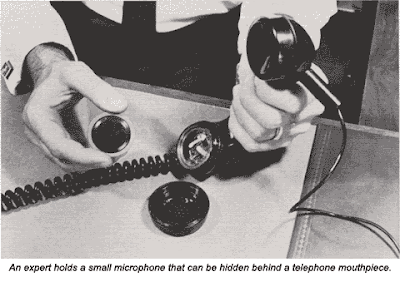The SM-3 Block 1B was fired from the USS Lake Erie after the ship's AN/SPY-1 radar identified and monitored a "separating ballistic missile target," which was launched from the the Hawaiian island of Kauai, the Defense Department agency said in a press release.
The guided missile cruiser maintained watch on the target and transmitted flight path directions to the SM-3 Block 1B. The interceptor positioned itself as directed by the ship and fired a hit-to-kill warhead at the missile. The kinetic warhead through the force of impact eliminated the threat.
It was quickly determined that the ICBM had been fired from an abandoned sugar plantation by members of the Hawaiian sovereignty movement, also known as ke ea Hawai‘i. A preliminary investigation indicated that members of the group, which includes a number of retired aerospace engineers, had worked in secret over much of the past decade at the old Kekaha Sugar Company mill building the missile and launch apparatus.
 |
| The Kekaha Sugar Company mill, from where the harmless ICBM was launched. |
A spokesperson for ke ea Hawai'i said that "We have never seen even a hint of redress from the United States for the 1893 overthrow of Queen Liliʻuokalani, and for the prolonged military occupation that began with the 1898 annexation. As far as we're concerned, both the overthrow and annexation were, and continue to be, illegal."
Immediately after destroying the missile, the Erie steamed to the site where it found thousands of pieces of paper floating on the surface. They all had the same message printed on them. The message in Hawaiian, said " Honi ko'u 'elemu haoles!" The message was sent to the National Virtual Translation Center, which was unable to translate the message. A native Hawaiian sailor was finally located on board the Erie. Barely keeping a straight face he translated the words as "Kiss my tushy outsider."
The following day the Director of National Intelligence issued a new directive that is intended to improve foreign language skills throughout the U.S. intelligence community.
Further investigation determined that missile designers had programmed the missile to self destruct over a major city on the West coast of the U.S. mainland, dispersing the harmless paper messages in a wide arc over the city.
Red-faced officials at the Pentagon were not amused, and would make no official comment. A Pentagon staffer, who asked not to be named, said that there is no plan for a retaliatory strike since Kauai is part of the United States.
Observers from all around Kauai have reported constant drone overflights since the June 27th missile launch and interception, particularly in the area surrounding the Kekaha Sugar Company mill. Thousands took to the streets in protest of the drone flights, with a major protest rally at Honolulu's Iolani Palace.
 |
| Thousands of Hawaiian sovereignty supporters chanting "Honi ko'u 'elemu haoles" outside the Iolani Palace on June 28th |
The Missile Defense Agency said that it's system is ultimately to be deployed as part of a developing U.S.-NATO missile shield in Europe. "Today’s intercept is a critical accomplishment for the second phase of the president’s Phased Adaptive Approach consisting of the SM-3 Block 1B interceptor that will be employed in an Aegis Ashore system in Romania in 2015."
Of 28 intercept trials to date of the Aegis Ballistic Missile Defense technology, 23 have been successful. The Aegis antimissile program is intended to eliminate short-, medium-, and intermediate-range ballistic missiles. The program is operated jointly by the U.S. Navy and the Missile Defense Agency.
When asked what the Pentagon is doing to protect against long range ballistic missiles, a department spokesperson said, "We'll have to get back to you on that."
###
Editor's Notes:
- Thanks to Global Security Newswire for the post used to craft this fake article: http://www.nti.rsvp1.com/gsn/article/next-generation-us-interceptor-eliminates-target-second-successful-test/?mgh=http%3A%2F%2Fwww.nti.org&mgf=1
- The Global Network Against Nuclear and Nuclear Power in Space and Bruce Gagnon's associated Blog, Organizing Notes, are excellent sources for information and opinion on missile defense (and many other aspects of U.S. militarism).













